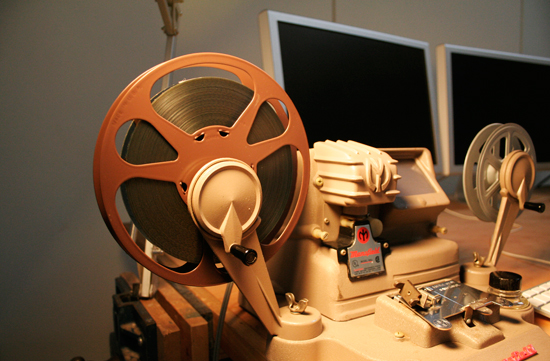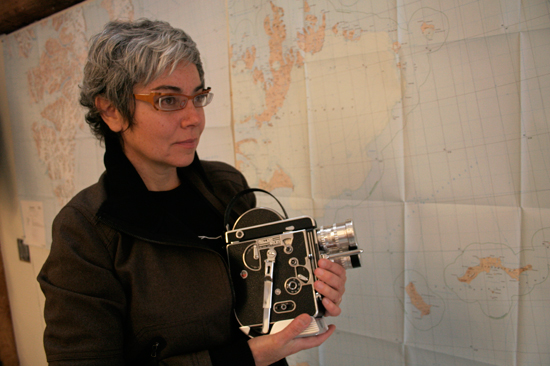At the beginning of the residency Rebeca Méndez had a certain ambiguity surrounding her. This mainly revolved around the fact that she came two weeks late because she was at a different residency, on a boat…In the arctic circle. Despite her late start, Rebeca has fit in perfectly at the residency. And as a result of her late start, she has brought some particularly interesting footage and photography with her. We didn’t talk specifically about that work however, My questions were more broad. Rebeca and I sat down and discussed the design vs. fine art sensibility, and how it plays out through her work.
BIO
Rebeca Méndez received her BFA (1984) and MFA (1996) from the Art Center College of Design in Pasadena, California. She has participated in numerous exhibitions worldwide and her work is represented in public and private collections including the San Francisco Museum of Modern Art, the National Design Museum in New York, the Denver Art Museum, and Museo Jose Luis Cuevas in Mexico City.
Carey: How do you see the transition between your design work and your fine art?
Rebeca: The interesting thing is how I am now more aware of what attracted me to design initially. A lot of the time, design is about being able to take something: an idea, a text, copy, anything complex, and being able to give that a kind of simplicity. It’s about reorganizing what is out there. My reorganization somehow brings a meaning, a direction and a communication. But it is, as I always thought, a reorganizing of materials. So when I focus on the nature of matter, it is how particles organize themselves, it is how the world, according to physical laws, finds its material.
Carey: And when you say, “Focus on the nature of the matter,” do you mean through the lens of your fine art?
Rebeca: Yes, I think so, but for example: Even when I was designing posters or designing books, I was reorganizing their thoughts. I am giving them a grid, a pattern, a way of understanding. With my photography right now, I am thinking about this series Weatherscapes, in which I’m looking specifically at weather, whether it is snow, rain or anything that obliterates the very clear line that divides sky and land.
Carey: The reorganization of that pattern?
Rebeca: It is basically obliterating it, softening it, making a completely different understanding of that space, just because it happens to be between me and that line. That way of choosing to have weather elements actually affect what I am looking at is very important to my way of looking at the nature of matter.
At Any Given Moment, Grass #2 from Rebeca Méndez on Vimeo.
Carey: Dealing with yourself in relation to the patterns of nature around you, where do you think the analytic organization of patterns fits in? It seems like when you’re designing a book, or something else with a very mathematical pattern, there is a different approach than how you might reorganize the perceptual patterns around you.
Rebeca: Well, I think that both of them utilize equal amounts of the logical, the organizational, the mathematical, as well as the intelligence of the senses. All of our sense of understanding space, flow or timing comes from both parts. So when I am working with…filming, lets say; when I went into the high arctic, I had both my 5D camera with all of its lenses, and then my 16mm camera. I have to be incredibly methodical and logical about all the apparatus, but then everything has a moment about, “Let’s get a sense of this,” the missing sense, the feeling of something. So I examine how I imbue something like a book with the same materiality as when I am photographing something as severe as a very simple horizon line? The Horizons are the simplest, abstract and distant, objectified understanding of the space. At the same time, how that is filmed or photographed can make you feel like you are completely alienated from it.
Carey: Do you think that maybe with your weather pattern photos, the removal of that horizon line makes you yearn for it, or want it more. Is it about the idea of being able to infer something visually that makes you feel more strongly attached, than if it were right there in front of you.
Rebeca: I think what you’re talking about is very much the concept of the sublime; that limit…that area of understanding, which is oscillating. At times you have very different relationships to the sublime; sometimes it can be uncanny, sometimes it can be completely undetermined. Yes, in my work I have always been interested in limits, and I am interested in where those limits are blurred. Always, when those categories are leaking or meshing together they create the grotesque and ambiguous. It is in those areas that I really like operating.
More of Rebeca’s work can be seen on her website at www.rebecamendez.com








